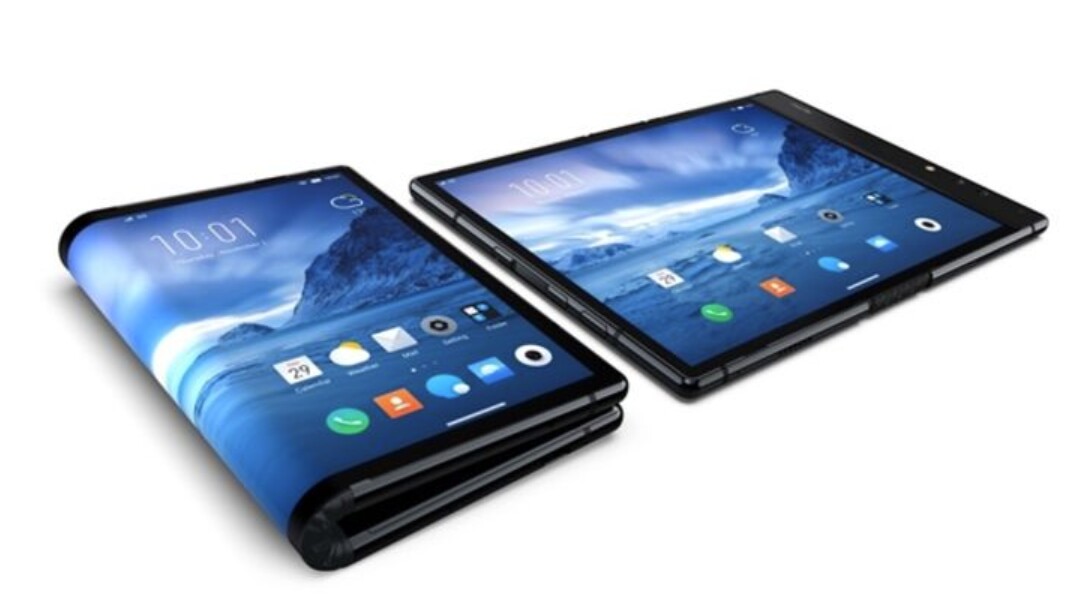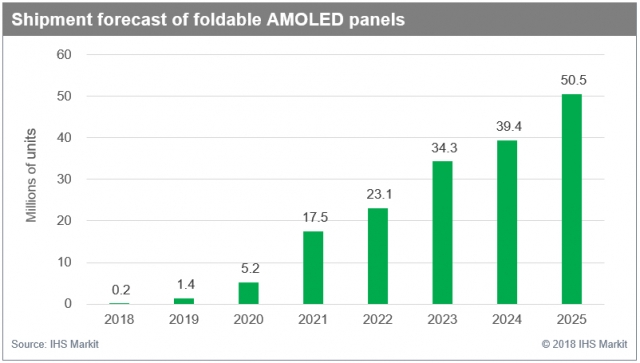In case you missed it, a recent IHS Markit update said shipments of foldable active-matrix organic light-emitting diode (AMOLED) panels are expected to reach 50 million units by 2025.

The report said, “Unit shipments of foldable AMOLED panels may not grow as fast for the first few years, but area per unit will be expected to be larger than that of conventional displays. All this while fab utilization forecast for panel makers is rising as demand continues to lessen for the more conventional flexible AMOLED panels. So suppliers are looking to smartphone brands to go foldable ASAP. IHS Markit even notes there is “…more optimism” with some panel makers looking at investing in “additional flexible fabs.” While this sounds impressive, we have seen ink with headlines touting the advent of flexible display devices being just around the corner since the Bush administration (last decade). Case in point illustrated by this BBC headline from November 2012, Flexible Phones out by 2013.
But, yes, there is reason behind taking these numbers seriously this time. Case in point; flexible displays are being used today in the most popular smartphone flagship models by both Samsung and Apple. The only trouble is that, at the moment, they are mounted in rigid glass enclosures, so you can’t really flex them.
Samsung is doing something about that and even as far back as their January WWDC, announced the development of the Infinity Flex Display that is due in March 2019, with the working prototype shown just recently
We have also seen the advent of the “world’s first foldable-screen smartphone”, China’s Royole Corp. released a 7.8-inch AMOLED based smartphone last month (in October, 2018.) (see coverage link below.)
It’s all about changing the form factor in a saturated smartphone market according to Jerry Kang of IHS (He is the senior principal analyst for emerging displays at IHS). “As the conventional smartphone market has become saturated, smartphone brands have tried to come up with an innovative form factor for a smartphone,” he said. What is really gets down to are issues of reliability and that pesky folding battery. Here’s Kang on those topics:
“Smartphone brands are cautious about launching foldable smartphones because the phones should be durable enough for repeated folding and thin and light enough even when supporting a larger display and battery,” Kang said.
But this time we may just be on the cusp of seeing the benefits of de-coupling device size from the size of the display, as visioned so many years ago by industry pioneers like plastic logic and Samsung. Finally the small display world is starting to bend, not just in the fab before they are placed into a rigid glass enclosure, but on our wrist and in our palms as folding displays panels hits a long envisioned bend in the road. – Stephen Sechrist
 Royole FlexiPai 7.8-inch Folding Phone, Source, Company
Royole FlexiPai 7.8-inch Folding Phone, Source, Company

 Working prototype of Samsung Infinity Flex Display Due in March 2019, Source: WCCFTech.com
Working prototype of Samsung Infinity Flex Display Due in March 2019, Source: WCCFTech.com
Foldable AMOLED Panel Shipments to Top 50 Million Units by 2025, IHS Markit Says
Royole Beats Samsung to the Flexible Phablet Punch
Shanxi Kuntech Kicks Off Flexible OLED Project
Visionox Announces Second 6G Flexible OLED Production Line
Sharp Officially Announces First Smartphone with Flexible OLED
Nubia Unveils Wrist-Worn Smartphone with Flexible OLED Display
A tip of the Hat for Royole’s Flexible OLED Display
Analyst Comment
DSCC also has published a good summary of the Samsung development. (BR)

